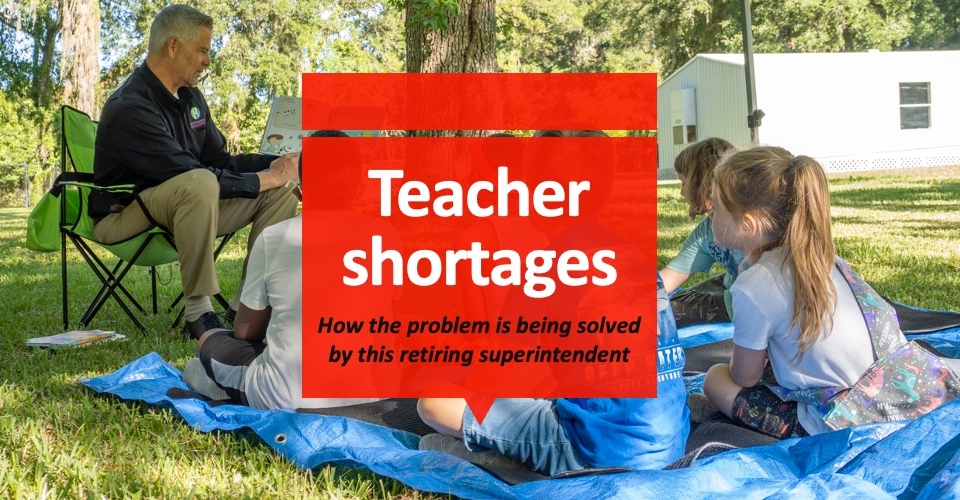Even before the pandemic, schools across the country were struggling with teacher vacancies. Now, following the COVID fueled mass exodus of educators, many are experiencing a crisis as 41 states are facing shortages in at least one subject or grade area.
Although the past decade’s sharp decline in teacher preparation programs seems to be finally leveling out, districts are still scrambling for ways to avoid an interruption in quality education for their students. Many are forced into settling for quick fixes like hiring long-term substitute teachers or combining students into larger classes, but temporary solutions like these can actually have serious long-term negative effects.
Substitute teachers, while a crucial part of our educational system, often lack the depth of content knowledge and ongoing professional development to offer the same quality instruction as a certified teacher. Large class sizes can create student disengagement and feelings of alienation, as well as make it difficult for the teacher to provide individualized attention.
Superintendent turnover: Frenzy of moves as school year ends
Schools may feel that these are the best of all available options, however, studies show that it can take up to three to four years of high-quality instruction for students to recover fully from a single year of poor teaching.
Unfortunately, the districts hit hardest by the teacher vacancies are those located in areas of high poverty, those with a high minority population and those in rural areas like ours. Lacking an abundance of financial resources means we must work together to think outside the box and explore non-traditional avenues, keeping an open mind to new ideas that can help train, retain and encourage both new and veteran teachers and staff.
Here are three strategies our district has used to not only keep our classrooms up and running, but deliver the high quality education our students deserve:
Tap into edtech
Technology in the classroom can offer a sustainable and scalable solution for teacher shortages in many ways. This year our district adopted Elevate K-12, an interactive live teaching platform, which significantly mitigated the impact of our teacher shortage. Classes are led by certified teachers, experienced and prepared to build relationships with students, while a classroom “coach” is physically on-site in the room to ensure students stay on-task and offer in-person support as needed.
This format can also be useful to districts looking to expand core course offerings and electives, offer test prep, career readiness skill development, summer school and small group instruction in areas like special education or enrichment.
Combining virtual teaching with in-person support creates a blended learning environment that ensures that our students receive consistent, high-quality education even in times of teacher vacancies.
Partner up
Many schools employ a large number of classified staff who have already earned an associates or even bachelor’s degree in a field other than education. Creating a mutually beneficial partnership with a local college or university’s teacher preparation program can allow these employees to become certified at a discounted rate or accelerated pace, creating a long-term solution for the school and career opportunity for the employee.
Classified staff have been an important resource for our district as they are ready equipped with a strong skill set for classroom work and are already familiar with our educational approach and team culture. We’ve created partnerships with colleges and universities on both the local and state levels to transition several of our classified staff into certified educator roles.
Retention vs. recruitment
With 86% of public schools struggling to hire educators, it’s crucial that we focus on investing in our people to reduce attrition rates. When budgets are a challenge, districts must explore innovative, non-monetary strategies, continually working to create an environment where teachers feel supported, heard and valued.
In our district, we developed teams with a mixture of new and veteran teachers who offer each other guidance, support, resources and best practices. We also work to create strong connections between our administrators and classroom teachers, taking a collaborative approach to decision-making processes related to curriculum, school policies and classroom management.
Addressing teacher vacacnies requires more than traditional solutions; it demands creativity and a willingness to reimagine how we approach education. By thinking outside the box and implementing innovative strategies, we can pave the way for a more resilient and effective educational system, ensuring that every student has access to quality teaching and a brighter future.









